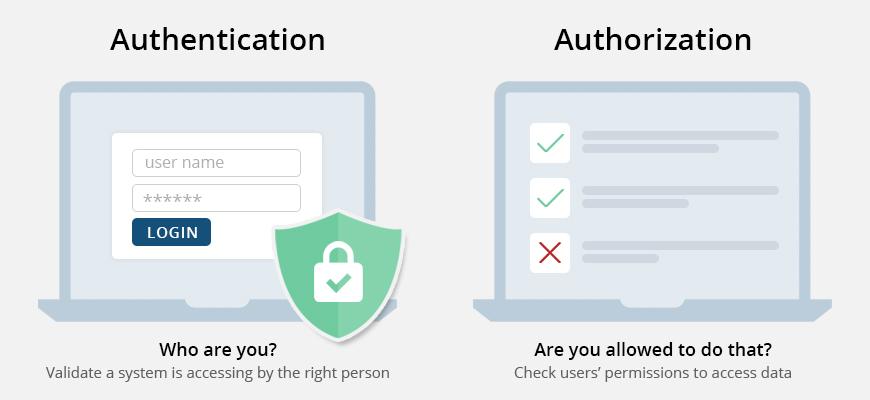Authentication and Authorization
Authentication and Authorization
Authentication and Authorization are two main important concepts in the world of security, mainly when it comes to accessing online services, apps, or systems. As authorization and authentication looks similar but they serve different purposes. Let's dive into authentication and authorization.
1. Authentication - "Who are you?"
Authentication is the process of verifying the identity of a user or a system.
When you log into a website or an app, you provide some form of identification like a username and password. The system then checks whether the information matches the credentials stored in its database. If it matches, you’re authenticated and allowed to proceed.
There are several methods of authentication such as;
- Username and password: The most basic form where you enter a password to prove your identity.
- Two-factor authentication : You use something you know (password) plus something you have (a one-time code sent to your phone) to log in.
- Biometrics: Using your fingerprint, face, or iris scan to verify your identity.
Example:- When you log into your email, you enter your email address and password to prove that you are the owner of that account.
2. Authorization - "What are you allowed to do?"
Once you're authenticated (your identity has been confirmed), the next step is authorization. This determines what you are allowed to do within the system. It answers the question, "Now that we know who you are, what are you allowed to access?"
Authorization controls access to specific resources or actions based on your role or permissions. For instance, just because you’re logged into a company's system doesn’t mean you can access all its files or settings. Some areas or actions may be restricted to certain users.
Ways authorization is managed:
- Roles: Users are assigned roles like admin or user with different access levels.
- Permissions: Users have specific permissions that control what they can view, edit, or delete.
Example:- After you log into your email, you’re authorized to send and receive messages. However, you’re not authorized to access someone else’s inbox.
Key Difference between Authentication and Authorization
- Authentication is about proving identity (who you are).
- Authorization is about permissions (what you are allowed to do).
Authentication happens before authorization. You first need to be authenticated before the system checks what you’re authorized to do.
Why Are These Important?
Both authentication and authorization are essential for protecting data and systems. They ensure that only the right people can access certain information and that users can only perform actions that they are allowed to do.
In today’s world, where data breaches and unauthorized access are common, having strong authentication and proper authorization in place helps keep systems secure.
Conclusion
In simple terms, authentication asks, “Who are you?” while authorization asks, “What are you allowed to do?” Both are critical parts of keeping data and systems safe, especially in digital environments.




Comments
Post a Comment